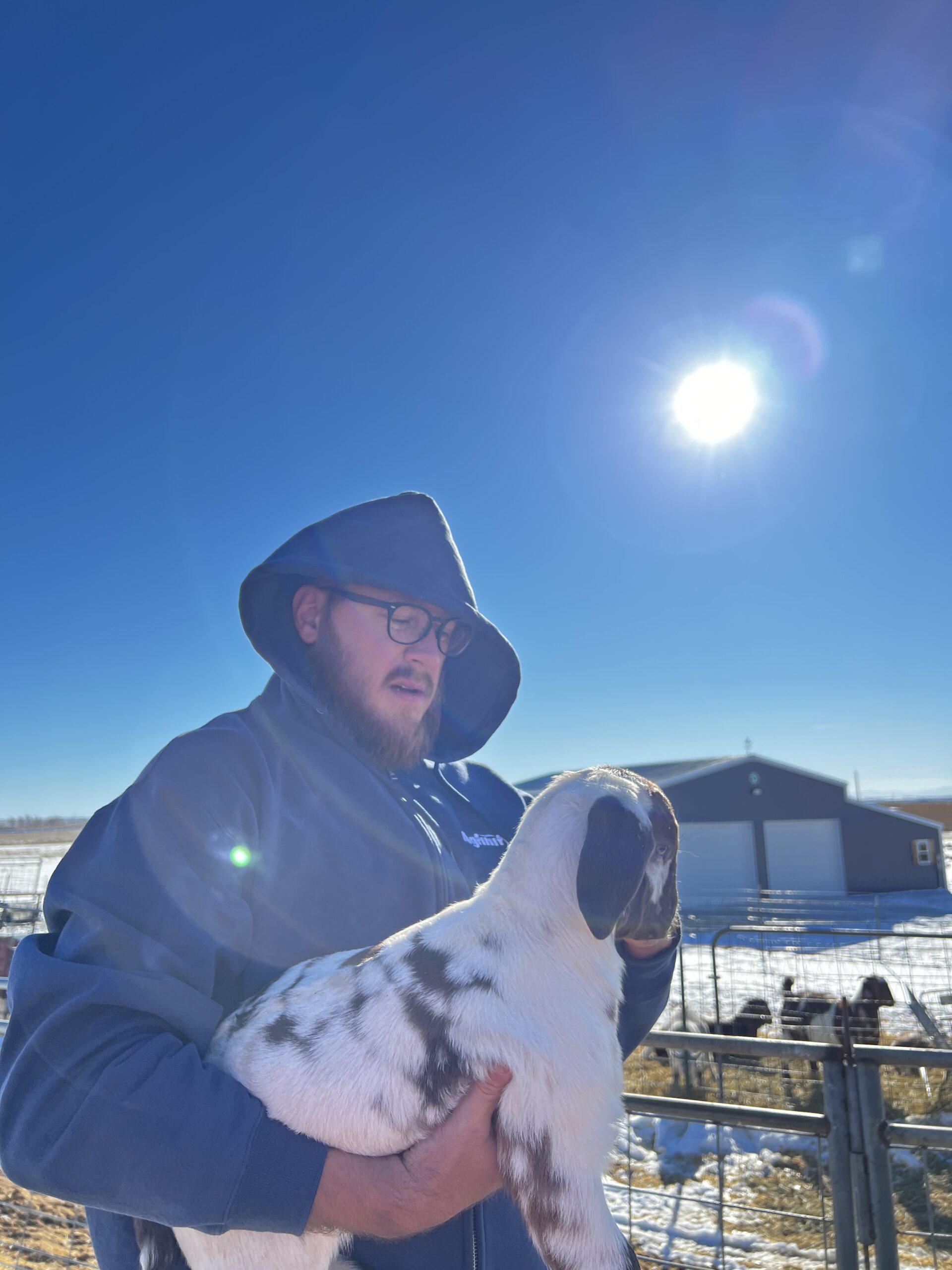The other morning, we went out to check on does in our heavy bred pen, which is where we keep the does who are one to two weeks away from kidding out. A fairly routine morning, we were greeted with a freezing goat kid. The doe kidded triplets and failed to get the third kid licked off and dry. With our overnight temperatures dipping into the single digits, the kid had almost frozen by the time we found her. While those situations are never fun to come across and may leave you feeling hopeless, it’s vital to act quickly if the kid is still breathing.
In our situation, the doe kid still had a shallow breathing pattern. So, we sprang into action and now ultimately have a happy, healthy doe kid in our barn. Here are the five things we did:
Ensure Proper Equipment is On-Hand
We recently wrote about equipment and products goat producers should have stocked for kidding season. We must admit, however, there were items we didn’t think about that are quite useful when cold weather meets kidding season. Here are some additional items to have on-hand that will help you save a hypothermic goat kid:
- Garbage bags (13-gallon)
- Storage tote (50-70-quart)
- Hot water source (i.e., bathtub, wash tub sink)
- Warm room (i.e., heated wash room, house)
- Nutri-Drench Sheep & Goat
- Sheep and goat bottle
- Colostrum
Determine the Situation
When you see a newborn kid laying on the ground, there can be many possible situations happening. No matter the situation, it’s important to assess the kid’s overall health.
If the following is true, it’s likely the goat kid is in hypothermia:
- The kid is generally lethargic and not alert
- Breathing is labored and/or shallow
- The inside of the mouth and tongue are cold to the touch
Warm The Freezing Goat Kid Up
Once you determine the goat kid is in fact hypothermic, it’s vital to act quickly. But you don’t want to warm them too quickly. Start some warm water (somewhere between 100 and 103 degrees). You’ll fill the storage tote with the warm water full enough to cover the kid.
Place the freezing goat kid in a 13-gallon garbage bag and tighten it around their neck. Doing so will ensure the afterbirth stays on the kid. The afterbirth is how does recognize their kids, so keeping the afterbirth on the kid is essential if you plan on giving them back to the doe.
Once the kid is in the garbage bag, place them in the warm water to start the warming process. Hold the kid in the water in a way that allows the body to be submerged, but the head is out of the water. You’ll likely have to change the water two to three times to keep the water warm enough.
To know when the kid is warm enough, you can either continue to feel the inside of their mouth until they start to feel slightly warm. Or, to be more accurate, you can use a rectal thermometer. The kid’s temperature should be 101.5-103.5 degrees. They may also start to seem more alert and active at this point.
Once the kid is warmed up, dry their ears and head off, take the bag off, and keep them in a heated area for a couple hours. This will ensure they’re able to maintain their body temperature.
Alternatively, if you’ve caught the hypothermia early, you can try to get the kid warmed up with a hairdryer. This method is not as efficient, though. You’ll also want to be careful—if you’re using the ‘hot’ setting, you want to keep the hairdryer moving as to not burn their skin.
Get Them Essential Nutrients
After completing the warming process, it’s important to get them the nutrients they need for their body to properly function, which will also help them maintain their body temperature.
Give the kid two pumps of Nutri-Drench Sheep & Goat directly into the back of their mouth. Next, get them four to six ounces of colostrum. Whether milked out of the dam, or from previously stored colostrum, the nutrient density of real colostrum is unmatched and will really get the kid kick-started.
Check on Them Often
Hypothermia is stressful on the body, especially for newborn kids. Even after you give them back to the dam, checking on them often to monitor body temperature, milk intake, and activity will offer them the best chance of survival. A good rule of thumb is to check up on them every two to four hours, depending on their overall health. This will ensure you can intervene again in a timely manner if something were to go awry.
